Making the case for Mizzou-SCAR to be permanent rivals in 3-6 model
Earlier in the offseason we previewed what a possible schedule would look like for Missouri in 2024 and 2025 when Oklahoma and Texas join the conference next year.
In that article, we briefly touched on the teams that would likely make Mizzou’s three permanent opponents in the 3-6 model schedule.
In the 3-6 model, teams would have three conference opponents that play every year while the other six conference games would be made up of the other 12 teams on a rotating basis. This also means just three non-conference games instead of four.
We've already given a case as to why Missouri-Arkansas should remain a rivalry and why Missouri-Oklahoma should renew their rivalry.
Here, we will expand on the previous article and give a more detailed case as to why the Tigers and the Gamecocks should continue their feud.
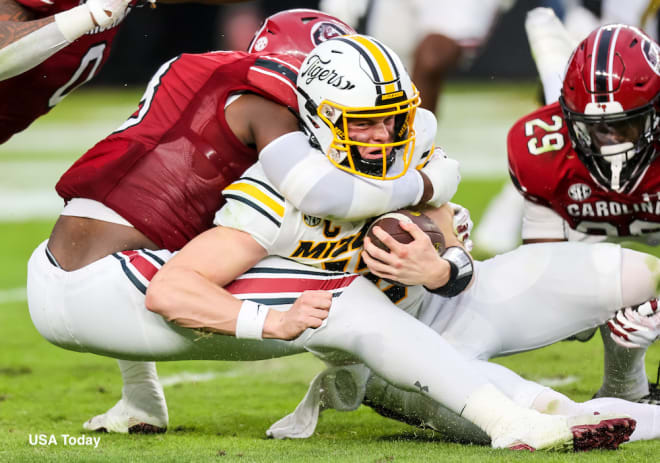
Historical context, fan engagement and geography
Just like Missouri-Arkansas, this is a newer feud due to Missouri’s short tenure in the Southeastern Conference.
However, the Missouri-Arkansas rivalry feels more intense and natural despite being a manufactured rivalry.
For most collegiate rivalries, there’s a gimmick or aura which the rivalry revolves around.
The main thing that easily establishes schools as rivals is usually proximity to each other. Whether that’s sharing the same state or being in bordering states.
In relationships, being physically close to someone is a positive. In sports, it seems the closer you are to another school the more hatred there seems to be.
If it’s not close proximity, it’s usually playing a high number of games like how Missouri and Oklahoma have played.
Southwest Missouri and northeast Oklahoma border each other but Norman and Columbia are over seven and a half hours apart, so that's not a quick trip. However, the familiarity of playing an opponent 96 times sticks out in people's minds.
If the Tigers and Sooners rekindled their rivalry it would make sense based on the number of games they've played alone.
Lastly, if it’s not about the quantity it can be about the importance and or quality of games.
For example, Alabama-Penn State has a rivalry. Now, it has been dormant for a while but when the Crimson Tide and Nittany Lions have faced off usually there's some weight to it.
In that rivalry, the teams have only matched up 15 times, but 11 of those games were when both teams were ranked.
Five of those games were when the teams were both ranked in the top 10 with one of those games being for the national championship.
Despite playing only a handful of times and being in different conferences and regions of the country, the significance of those games and how they affected the national championship picture makes that matchup a rivalry.
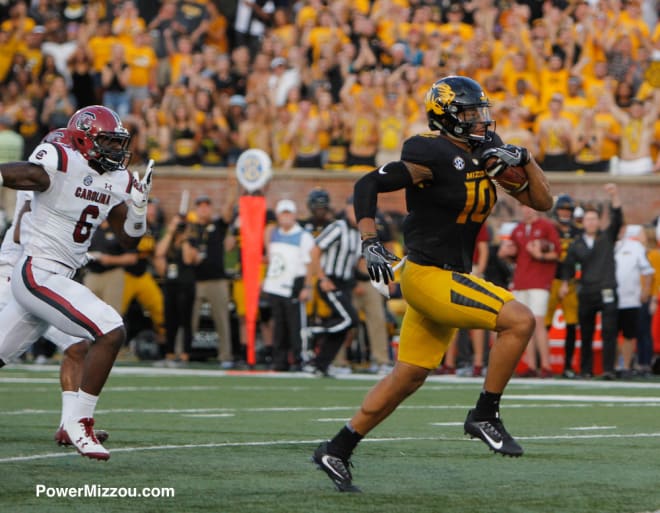
So, bringing it back to Missouri-South Carolina 一 what’s the gimmick for them?
The “Mayor’s Cup.”
Yeah, this may not have the same sizzle as the “Battle Line Rivalry” or the “Tiger-Sooner Peace Pipe,” but sometimes you have to make your own fun while you work towards something you really want which is competing for the division title.
For now, Georgia and Tennessee are hovering over the SEC East title, so Missouri-South Carolina likely isn't going to be determining who gets to go to Atlanta for the SEC Championship.
The aforementioned fun is battling a team that share’s the same city name as you.
At least, that’s the reasoning behind calling it the “Mayor’s Cup.”
That’s the marquee so to say, but honestly, the real reason why this is a good matchup to keep going is that both schools need a third rival and the series is competitive (we'll get to this in the next section).
Arkansas and Oklahoma make the most sense for two of Missouri's three permanent rivals if the 3-6 model comes to fruition. However, there's a case for at least three other teams (including South Carolina) to be the Tigers' third rival.
South Carolina has two concrete rivals in Georgia and Florida, but it also has a number of teams it could consider as its third rival.
Ironically, because the Tigers' biggest foe (Kansas) is in the Big 12 and the Gamecocks' biggest rival (Clemson) is in the Atlantic Coast Conference, they each have space for one more SEC foe.
Now, geographically speaking, there isn’t much of a reason to have a rivalry with each other since almost 900 miles separate the campuses.
Some of the fun in rivalries is the fan bases of either team being able to commute to road games.
The reality is this isn’t a game most fans of either team will be doing much traveling for but the city pride and competitiveness of the games will keep both fan bases engaged.
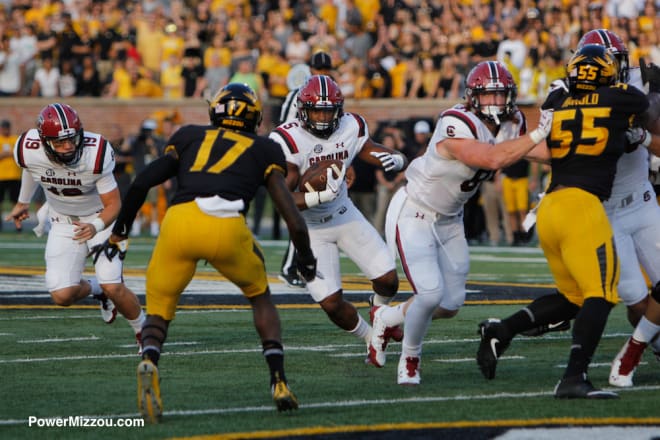
Competitiveness and key performances
As previously mentioned, rivalries can come about from history, proximity and competitiveness or some combination of the three.
A game that features two historic rivals facing off even though one team is likely to win most of the time isn't the same game as if two newer rivals face off and equally have a chance to win.
This matchup represents the latter.
In this series, Mizzou holds an 8-5 lead all-time and a 6-5 lead since joining the SEC.
Since the first meeting in 1979, each team has won at least two games in a row before losing.
Missouri won the first two games, then South Carolina won back-to-back, followed by two more wins for the Tigers, succeeded by the Gamecocks winning three straight and Mizzou winning the last four.
Of those eight Missouri wins, only one win has been by 20 points (2019) while five of those wins were by 10 points or less.
Of South Carolina's five wins, it has the only blowout (a win of 21 or more points) of the series (2012) with three of its other wins having been decided by 10 points or less.
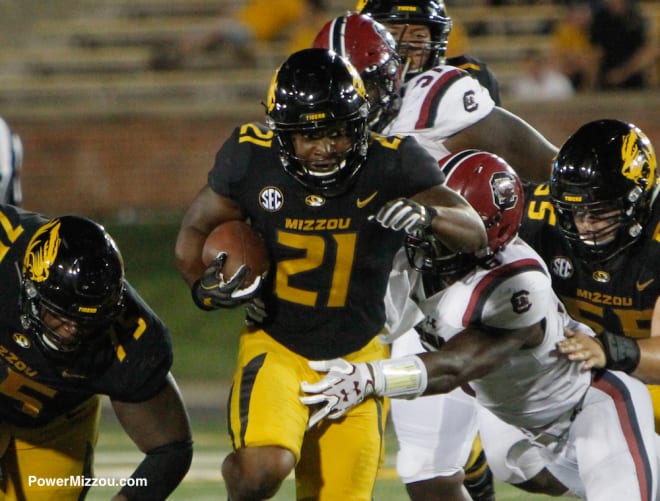
In the 2013 contest, the only game when both teams had been simultaneously ranked, No. 21 South Carolina would erase No. 5 Missouri's 17-0 fourth-quarter lead to win 27-24 in double overtime on the road.
The Gamecocks would outscore Missouri 24-7 from the fourth quarter until the clock hit triple zeroes.
Quarterback Connor Shaw would come off of the Gamecock's bench and complete 20 of 29 passes for 201 yards and three touchdowns.
Kicker Elliot Fry would notch the win with a 40-yard field goal to hand Mizzou its first of two losses that season.
In 2014, the season the Tigers would go to the SEC title game for the second straight season, the Gamecocks entered the season at No. 9 in the AP rankings.
They'd lose their season-opener and drop to No. 24 entering week three before beating No. 6 Georgia. They'd defeat Vanderbilt in week four to enter the week five matchup versus unranked Mizzou at No. 13.
Running back Russell Hansbrough would score two of his three touchdowns in the fourth quarter to lead Missouri to a 21-20 road win.
In 2018, the Tigers held a 23-14 advantage over South Carolina entering halftime before letting the Gamecocks score 17 unanswered in the third quarter to take a 31-23 lead entering the fourth quarter.
Mizzou would actually outscore the Gamecocks 12-6 in the fourth quarter and had a 35-34 lead after a Tucker McCann 57-yard field goal with less than 80 seconds to go.
Quarterback Michael Scarnecchia would lead South Carolina down the field and set up kicker Parker White for a 33-yard field goal to clinch the win.
Scarnecchia completed 20 of 35 passes for 235 yards and three touchdowns. Wide receiver Deebo Samuel would lead the way with four receptions for 88 yards and a touchdown while fellow receiver Bryan Edwards had seven receptions for 73 yards and two touchdowns.
Lastly, in 2021, running back Tyler Badie would put the Tigers' offense on his back and rush for 209 yards and a touchdown on 34 carries (6.1 yards per carry) in the 31-28 win. He'd also add five receptions for 22 yards.
Badie would also get some help from his defense that forced three turnovers (two fumbles and an interception) that game.
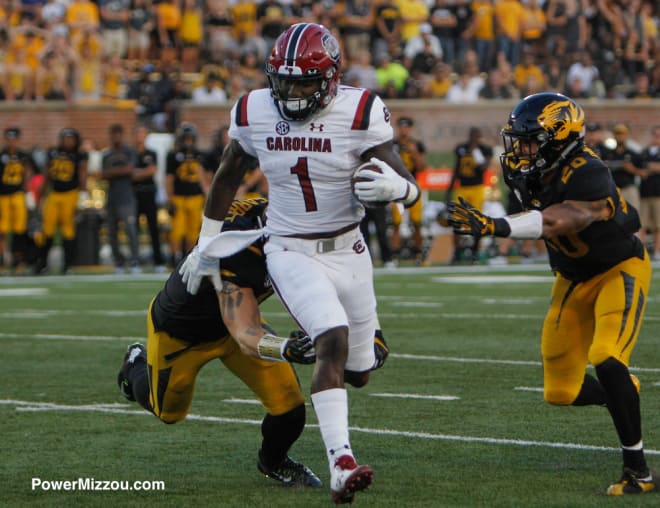
Verdict
There's nothing like a game where both teams (and their fan bases) believe they have a legitimate chance to beat a team.
It's usually not as fun to face someone who is believed to be in a bigger or smaller weight class.
In short, the case for this rivalry is that there usually is a pretty competitive football game year in and year out, there's jockeying for position in the division and there's city pride on the line.
That's enough ingredients to make up for the lack of history the programs have together and the distance that separates the schools.
Below, is a five-star rating system based on historical context, fan engagement and geography and competitiveness.
Historical context: 2 out of 5
Fan engagement and geography: 2 out of 5
Competitiveness: 4.5 out of 5
Overall: 3.25 stars out of 5
SPONSORED BY MYPERFECTFRANCHISE.NET
Are you…Ready to leave the corporate Rat Race for the American Dream? Looking for a side hustle while working your current job? Wanting to diversify, build wealth, and/or leave a legacy? Andy can help!!! Andy is a franchise consultant (as well as franchise owner) and helps people find franchises that fit their skill sets, financial requirements, time to commit and more. …His services are 100% free and he’s here to help if you have any questions about business ownership.

Learn more about Andy and franchise ownership through these resources:
Service Based vs Brick and Mortar
Andy Luedecke
p: 404-973-9901
e: andy@myperfectfranchise.net
Book time with me at: Andy's Calendar
Talk about this story and more in The Tigers' Lair
Make sure you're caught up on all the Tiger news and headlines
Subscribe to our YouTube Channel for video and live streaming coverage